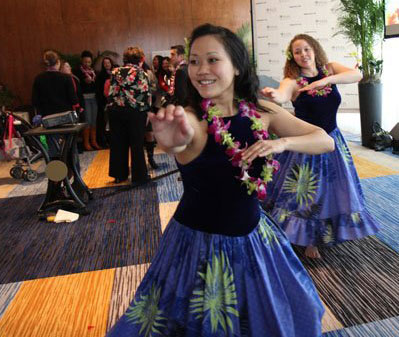Facts about Hula Dance
 Hula is an interpretive dance and form of storytelling developed by the Polynesians. Before written word, Hawaiians used chant and hand movements to tell stories about monarchy, gods, people and places. For more information on hula and its history Check out this Wikipedia page.
Hula is an interpretive dance and form of storytelling developed by the Polynesians. Before written word, Hawaiians used chant and hand movements to tell stories about monarchy, gods, people and places. For more information on hula and its history Check out this Wikipedia page.
Ancient hula dance (Hula Kahiko) often defined as hulas composed prior to 1893 which utilize instruments including the ipu heke, pa’u drum and other ancient Hawaiian apparati, encompassed a diverse variety of styles and moods to praise and honor the Gods, Goddesses, chiefs and places or for record keeping of history through the oral traditions.
Kahiko (ancient hula) is a record and reflection of the times it is created in, and the kahiko that we look upon as traditional today was considered contemporary one hundred years ago. Today is a part of life and a part of history and in a hundred years it will be considered traditional kahiko. Sometimes everyone forgets what the hula is all about. I’ve forgotten many times what it really means but as you get older you find that it’s real and it’s there. The spirit of the kupuna will always be there.
-Kumu Hula Maiki Aiu Lake
Modern hula dance (Hula ʻAuana) arose from the adaptation of traditional hula concepts of dance and chant (mele) to Western Influences. ʻAuana hula utilizes melodic harmony and utilize instruments including the ukulele, steel guitar, bass guitar, guitar, bass, piano and other modern apparati. The dances also, much like the ancient Kahiko form, encompassed a diverse variety of styles and moods to praise and honor the Gods, Goddesses, chiefs and places as well as songs of love for people and places of Hawaii.
Hula expresses everything we see, feel, hear, smell, taste and touch. Hula is life.
-Kumu Hula Robert Cazimero
